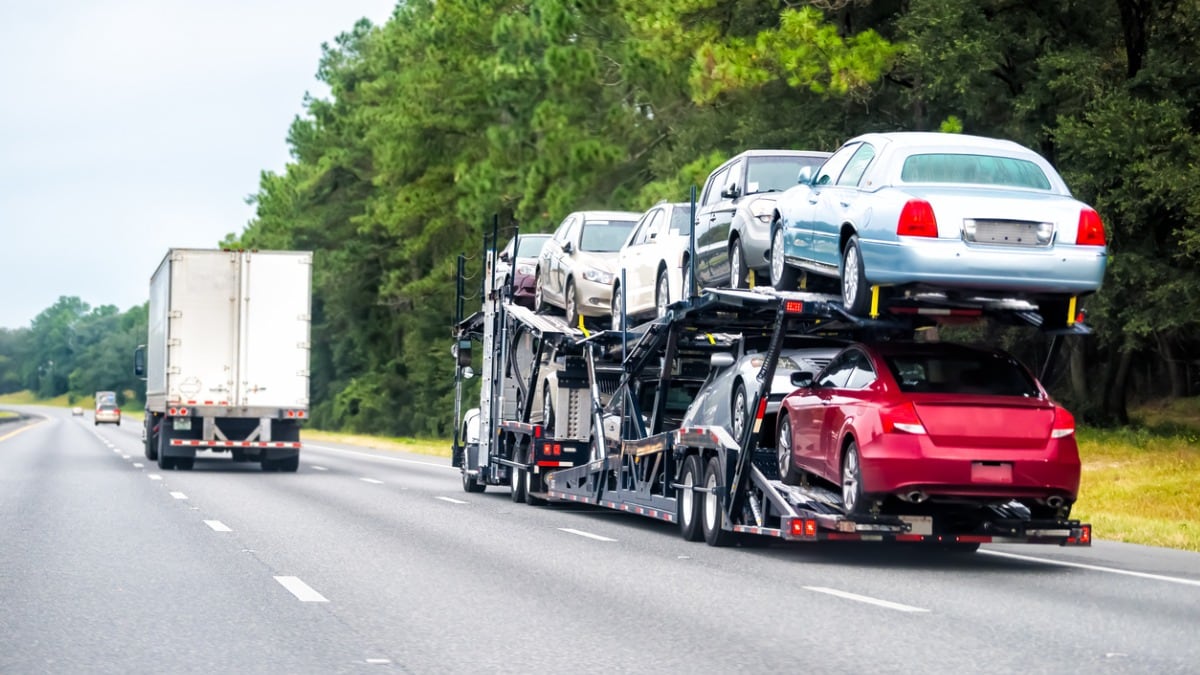
Last week, President Trump announced sweeping new tariffs on the auto industry that could raise the price of every new car sold in the U.S. However, the presidential proclamation, the legal document that started the process of enacting the tariffs, left much unclear about how they will work.
That has much of the auto industry waiting nervously, uncertain of what the price of many new cars could be later this year.
About the Document
Trump issued a presidential proclamation last Wednesday announcing the tariffs. A proclamation is a legal document different from an executive order.
Executive orders are simply instructions to federal employees. They do not have the force of law. Much like your manager can send you an email with instructions for what to do at work, the president can do the same for federal employees. An executive order doesn’t change laws or regulations, though it may tell employees to do so.
Presidential proclamations are directed at the public, not just at federal employees. They also lack the force of law. Instead, they explain how an administration plans to execute a law. This is how Trump used last week’s proclamation. The document says the president will enact tariffs to carry out a 1962 act designed to expand trade.
Two Dates and a Placeholder
The proclamation straightforwardly explains that, starting April 3, many cars built outside the U.S. will be subject to a 25% levy.
It exempts cars built in Canada and Mexico under the provisions of the U.S.-Canada-Mexico Agreement (USMCA), a trade pact Trump negotiated during his first term.
Then, it gets complicated.
The proclamation also announces tariffs on automobile parts. Those, it says, will begin “no later than May 3.” They’ll trigger when the Commerce Department publishes rules explaining how they’ll work in the Federal Register – effectively the government’s newspaper.
The department could do that at any time, starting the tariffs with little notice. Typically, such rules take months to prepare.
The proclamation doesn’t, however, tariff all parts in all cars on the day those rules appear.
Instead, it notes that some vehicles and parts “qualify for preferential tariff treatment under the USMCA.” For those, it says, the U.S. will apply a tariff “exclusively to the value of the non-U.S. content of the automobile.”
The proclamation instructs the Commerce Department and the U.S. Customs and Border Protection agency to work together to create “a process to apply the tariff exclusively to the value of the non-U.S. content” of cars and parts. It does not give them a deadline to create that process. That could mean some vehicles don’t face a tariff on May 3. They won’t face a tariff until the government determines how to separate U.S.-made parts from outside parts.
Automakers Can’t Easily Say Where Every Part Comes From
Automakers don’t currently publish data on a car’s non-U.S. content. Window stickers quantify the percentage of U.S. and Canadian parts in each car but don’t separate Canadian content from U.S. content.
That’s true because North America’s auto parts supply chain is deeply integrated.
Parts are made of parts. Some parts cross borders multiple times as suppliers assemble them into larger and larger parts. A wiring harness made in Ohio can be sent to Mexico, where it is used in a seat motor, which is sent back to the U.S. and attached to a seat, which is sent to Canada, where it is built into a car that is then sent to the U.S. for sale.
Tracking down precisely what counts as “U.S. content” is not straightforward.
Lobbying Has Started
With all the confusion in mind, lobbyists have begun working to influence the eventual rules.
Bloomberg reports, “The Detroit 3 automakers are making a last-ditch effort to sway the Trump administration on tariffs set to take effect this week, contending that levies on the thousands of parts they source abroad could have catastrophic effects on the industry.”
They are “seeking exemptions on low-value parts like sheaths of electrical wiring that course through modern cars, which are labor intensive to produce and tend to be made in Mexico and other low-wage countries.”
No One Can Tell You What a Car Will Cost Yet
With so much uncertainty, automakers themselves don’t know what they’ll need to charge for each car once the tariffs are in force.
Reuters reports, “Analysts expect automakers will have to significantly hike vehicle prices if the new tariffs remain in place for an extended period, leaving consumers to pay more for vehicles that already have price tags averaging near $50,000.”
But no automaker has even told its dealers precisely what to expect. Hyundai this week “warned U.S. dealers it is evaluating its pricing strategy in the face of forthcoming 25% tariffs on imported vehicles and parts,” Reuters reports.
Mercedes executives, asked about pricing, said “no automaker was operating in a silo, implying it would observe how its competitors responded once tariffs were in place,” according to Reuters.
Some could even use one car to offset the increased cost of another. Chevrolet, in theory, could decide that Trax buyers can’t afford a price hike but Silverado buyers can, and raise Silverado prices to offset the added cost of importing the Trax from its South Korean factory.
Dealers imported the cars on their lots today at pre-tariff prices.
However, they may not charge pre-tariff prices for them. Dealers know that they may need to pay higher, post-tariff prices to replace any car they sell today. That puts pressure on their finances and will likely cause prices to creep up even before tariffs begin.
If you’re car shopping, the best way to plan your timing may be to watch the Kelley Blue Book Fair Purchase Price of each car you’re considering. We update each Fair Purchase Price weekly based on what buyers have paid in your area in the past week. Tracking that figure should help you plan your timing and know whether to join the crowd that may rush out to buy before tariffs kick in.

